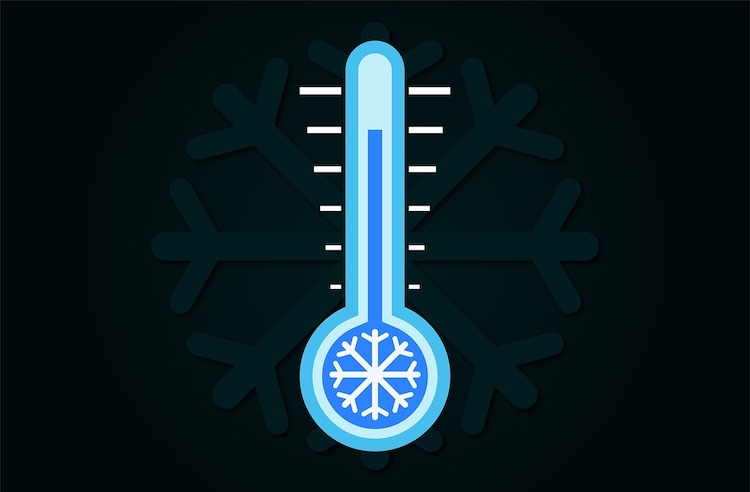Things To Consider When Purchasing Temperature Products

When venturing into the realm of temperature monitoring and regulation, it is imperative to have a clear understanding of the available products and the criteria to assess their suitability. Temperature products, vital in numerous industries ranging from healthcare to food services, demand careful consideration to ensure precision, reliability, and efficiency.
This document aims to guide readers through the essential aspects to contemplate when selecting temperature monitoring devices, providing insights into technological advancements, user needs, and regulatory standards that could influence their purchasing decisions.
Accuracy and Precision
Accuracy and precision in temperature measurements cannot be overstated when the success of your operations hinges on minute fluctuations in temperature. Ensure that the devices you consider have a proven track record of delivering reliable readings that meet your industry's standards. This is particularly critical in sectors like healthcare and pharmaceuticals, where the integrity of drugs and patient care directly correlates to temperature control.
Regular calibration and maintenance are essential for sustaining the accuracy and precision of temperature monitoring devices over time. Before making a purchase, investigate the manufacturer's recommended calibration procedures and the associated costs. Devices that are easier to maintain without frequent professional recalibration may offer long-term savings and greater reliability.
Not only is accuracy and precision critical for quality control, but it also plays a crucial role in complying with regulatory standards. No matter if you opt to buy from www.lakeshore.com, or any other reputable supplier, make sure that the products meet industry-specific regulations and have proper certification. Failure to comply with regulatory standards can result in costly fines and harm your business's reputation.
Data Logging and Connectivity
The ability to log and analyze temperature data over time enhances your ability to spot trends, anticipate potential issues, and make informed adjustments. Opt for devices with integrated data logging capabilities and consider how easily this data can be transferred to your existing systems. Connectivity options such as Wi-Fi, Bluetooth, or USB can significantly streamline this process, making real-time monitoring and historical data analysis more accessible.
In today’s interconnected world, the option for remote monitoring of temperature is invaluable. It allows for agile responses to temperature deviations, potentially saving thousands in lost inventory. Ensure that the temperature monitoring system offers a reliable and secure method for remote access, ideally through mobile applications or web-based platforms, enabling you to oversee operations from anywhere, at any time.
Durability and Environmental Resistance
Given the critical importance of temperature products, selecting devices engineered for durability and longevity is paramount. Assess the build quality and inquire about any inherent design features that protect against environmental factors such as moisture, dust, and extreme temperatures. This is especially pertinent for devices used in rugged or outdoor environments.
A manufacturer’s warranty can provide insight into their confidence in a product's durability. Look for products backed by robust warranties and consider the reputation of the manufacturer for customer support. Knowing that you have access to help when needed can be reassuring, especially for devices that are crucial to your operations.
Regulatory Compliance and Certification
Regulatory compliance is a non-negotiable factor in many industries, ensuring that temperature monitoring devices adhere to specific standards and guidelines. This is indispensable in fields like food safety, healthcare, and laboratory research. Confirm that any device you're considering is certified for use within your industry, ideally by recognized standards organizations.
Alongside compliance, having documented proof of a device's accuracy and maintenance history is foundational for audits and quality assurance processes. Devices that offer easy access to calibration certificates, maintenance logs, and other traceability documents will streamline regulatory compliance and help maintain operational transparency.
User-Friendly Design and Interface
The efficiency of your temperature monitoring processes is directly influenced by how user-friendly the devices are. Look for products with intuitive interfaces, clear displays, and straightforward setup procedures. Devices with complex menus and settings may require more training time and could lead to errors in usage, affecting the accuracy of your temperature monitoring.
Consider the accessibility of the device and the level of training required for competent use. Devices that offer quick-start guides, online tutorials, or customer support hotlines can reduce the learning curve and help ensure that your team can effectively utilize the temperature monitoring system. Ensuring your team is well-versed in operating these devices can prevent misuse and prolong the device's lifespan.
 In conclusion, selecting the right temperature monitoring product demands a comprehensive understanding of your specific needs and the challenges you face in your industry. From ensuring unparalleled accuracy and precision to guaranteeing durability and regulatory compliance, every aspect discussed in this guide serves as a fundamental checkpoint for making an informed purchase.
In conclusion, selecting the right temperature monitoring product demands a comprehensive understanding of your specific needs and the challenges you face in your industry. From ensuring unparalleled accuracy and precision to guaranteeing durability and regulatory compliance, every aspect discussed in this guide serves as a fundamental checkpoint for making an informed purchase.
Additionally, the emphasis on data logging and connectivity, alongside a user-friendly design, underscores the importance of integrating these devices seamlessly into your operations. By carefully considering these factors, you are better positioned to choose a temperature monitoring solution that not only meets but exceeds your expectations, safeguarding the quality and integrity of your operations.



